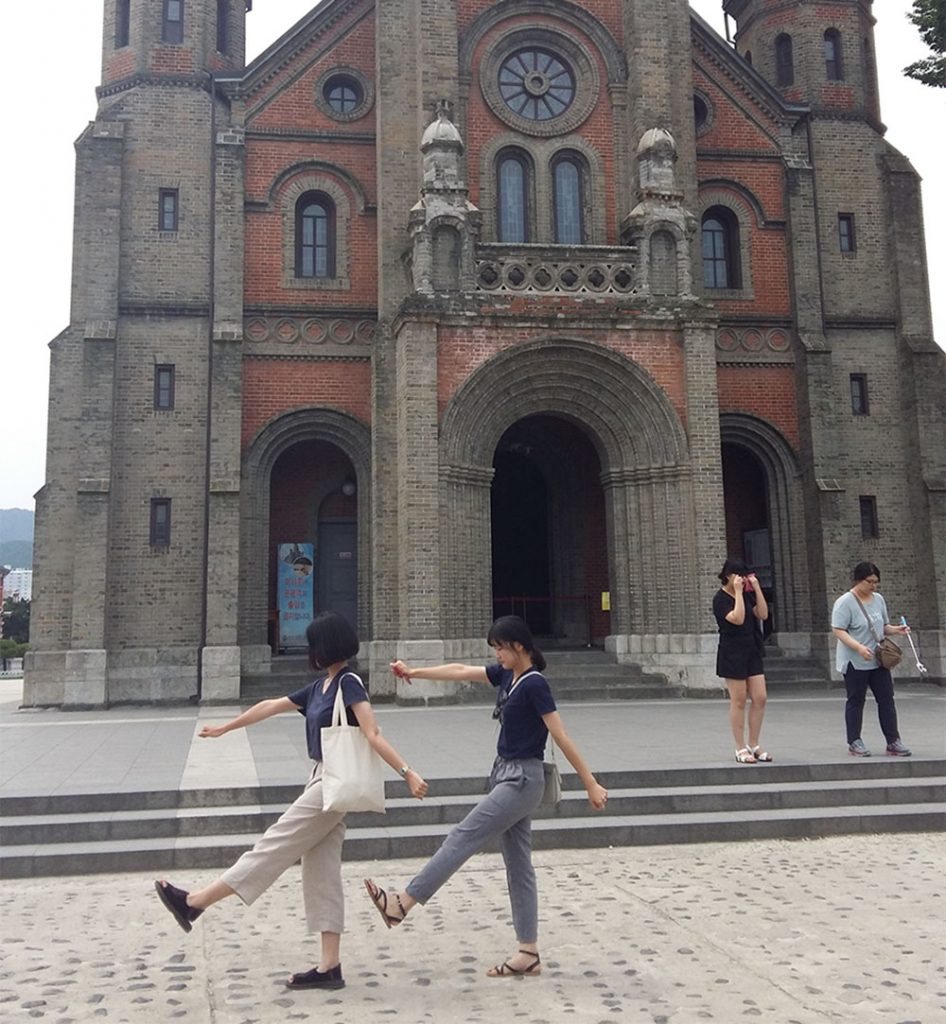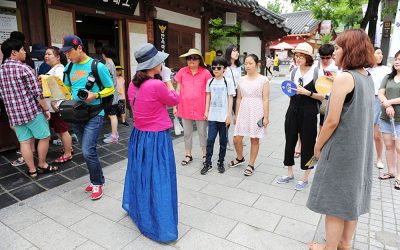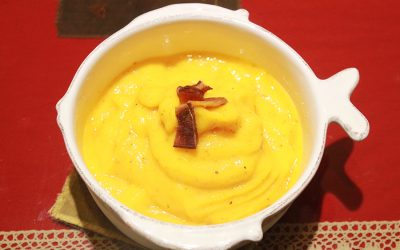Get to Know the Jeonju Hanok Village in Just Several Hours

Jeonju Hanok Village is what makes Jeonju the city of traditions, foodies, and cultures. The Hanok Village is moderate in size and the weather is getting cooler every day, which make the village great to walk around. If you plan ahead, you’ll be able to see, eat, and enjoy the very best things the Hanok Village has to offer in just several hours.
So, this week’s post is for those who ‘want to spend less time on studying maps in such a hot and humid weather.’ I will introduce the key attractions in the Hanok Village that shouldn’t be missed. Let’s begin then!

Jeondong Cathedral
Jeondong Cathedral is the first thing you’ll come across upon arriving at the Hanok Village. It’s a beautiful and popular photo spot. If you type #Jeonju on the Internet, you’ll see a lot of photos taken here.

Jeondong Cathedral is the first thing you’ll see upon getting off the bus.

▲ The view of Jeondong Cathedral between the flowers and the statue of the martyr
Jeondong Cathedral is known as one of the most beautiful cathedrals in Korea. The main cathedral building is the oldest remaining Western-style modern-era building in the region. A lot of effort was put into the construction of cathedral that even brick specialists were brought in from China. The red bricks walls are very impressive.

As such, the cathedral is not only beautiful, but also historic. The cathedral was built over the place where the first martyrs of Korea were executed during the Joseon Dynasty. If you’re a catholic, this would be a very significant place.

The red cross engraved on the stone reminded me that this is where the martyrs shed their blood.

Also, the cathedral is where the sad marriage ceremony of Park Sin-yang and Jeon Do-yeon was held in the movie “A Promise” (1998). Also, the movie “My Father” (2007), starring Daniel Henney, was shot at the cathedral. I remember sneaking out with my friends during the day to see Daniel Henney when I was a junior high school student.

There is a praying place for your family and loved ones. I wish happiness for everyone reading this post!
Gyeonggijeon Palace
On the opposite side of Jeondong Cathedral is Gyeonggijeon Palace, another popular spot of the Hanok Village.

I also shot the walking shot in front of the palace.

Above is the entrance fee to Gyeonggijeon Palace. I gladly paid it wishing that the place is managed and conserved well for our next generations. Local residents are eligible for discounts, so if you’re living in Jeonju, make sure to bring a student license or other identification.

This is Jeongjeon, the main building of the palace. This building hosts the portrait of Taejo Lee Sung-gye, the founder of the Joseon Dynasty. I was shocked to find out that the portrait is the one that appears in almost every Korean history textbook. Since then, I find the portrait somewhat magnificent. To preserve the portrait, taking photos isn’t allowed. It’s better to see it with your own eyes then through the lens.

Next is Jeonju Sago, the historical archive of the Joseon Dynasty. This place appeared in the movie “Masquerade” (2012), starring Lee Byung-hun. Primary school students were taking a guided tour of the place. They seemed a bit bored, but I’m sure they’ll get to appreciate the visit once they start learning the Korean history later.

This is Jeonju Sago. You’re allowed to enter the building.

Above is the description of Jeonju Sago. There used to be four archives hosting the Annals of the Joseon Dynasty. During the Japanese Invasion of 1592, only the Annals hosted by Jeonju Sago avoided destruction. If not for the efforts of the people that preserved the Annals, Korean history books must have been a lot thinner.

This is the Royal Portrait Museum.

The Royal Portrait Museum houses the royal portraits of the Joseon Dynasty. This spot must not be missed.

This is Gyeonggijeon Palance and Jeondong Cathedral within one frame. Nice, isn’t it?
Omokdae
After Gyeonggijeon Palace, walk along the Taejo-ro, the main street of the Hanok Village. You’ll find a variety of street foods. When you’re done filling your stomach, keep walking deeper into the Hanok village.

Walk past the famous PNB Poongnyun Bakery and other food venues. Make straight for Omokdae Pavilion.

On the way to Omokdae Pavilion is the Jeonju Craftworks Exhibition Hall. You can have a look inside and visit the toilet there.

Processed with VSCOcam
On the right side of the main street that leads to Omokdae Pavilion, you’ll find a resting place. This place is important, because……

Processed with VSCOcam
There’s a locker here! Keep this place in mind in case you’re carrying a heavy luggage or bag.

Processed with VSCOcam
At the end of the street is a huge stone with ‘Jeonju Hanok Village’ engraved on it. And can you see the trail next to the stone? Take the trail and you’ll come across……

Processed with VSCOcam
This is a view point where you can have the whole Hanok Village under your eyes. Keep following the trail.

Processed with VSCOcam
Finally, you’ll arrive at Omokdae Pavilion. Cool off your sweat and enjoy the breeze while resting under the pavilion.

Omokdae Pavilion was built by Taejo Lee Sung-gye, the founder of the Joseon Dynasty, to celebrate the victory against the army of Japanese pirates. He cherished Jeonju, because it’s where his ancestors were from.
Jaman Mural Village

Processed with VSCOcam
Walk down along the stairs on the right of Omokdae Pavilion. (Keep in mind that there’s a toilet here too.)

Processed with VSCOcam

Processed with VSCOcam
Walk past this bridge.

This is the entrance to Jaman Mural Village with cute shops, cafés, and creative wall paintings. Start anywhere you’d like to walk around the village.

Processed with VSCOcam
Me and my friend took a photo in front of pinwheels at the café Kojitapong. This is a great photo spot. Please have regard for the residents of the village and refrain from making noises.
Today, I walked around the most famous spots of the Jeonju Hanok Village. Take photos in those spots to show your family and friends that you’ve been to the famous Hanok Village.
Now you can either visit the famous gourmet restaurants of the city or chill out drinking Korean herbal teas in cute cafés.
As I said in the beginning, the Hanok Village is pretty walkable. There’s no need to be hasty when looking around. I visit the village often, but every time I come here, I discover new things and new alleyways. I wish my post had been helpful for those who have only several hours to spend in the Hanok Village. See, eat, and enjoy as much as you like in Jeonju!




최신 댓글